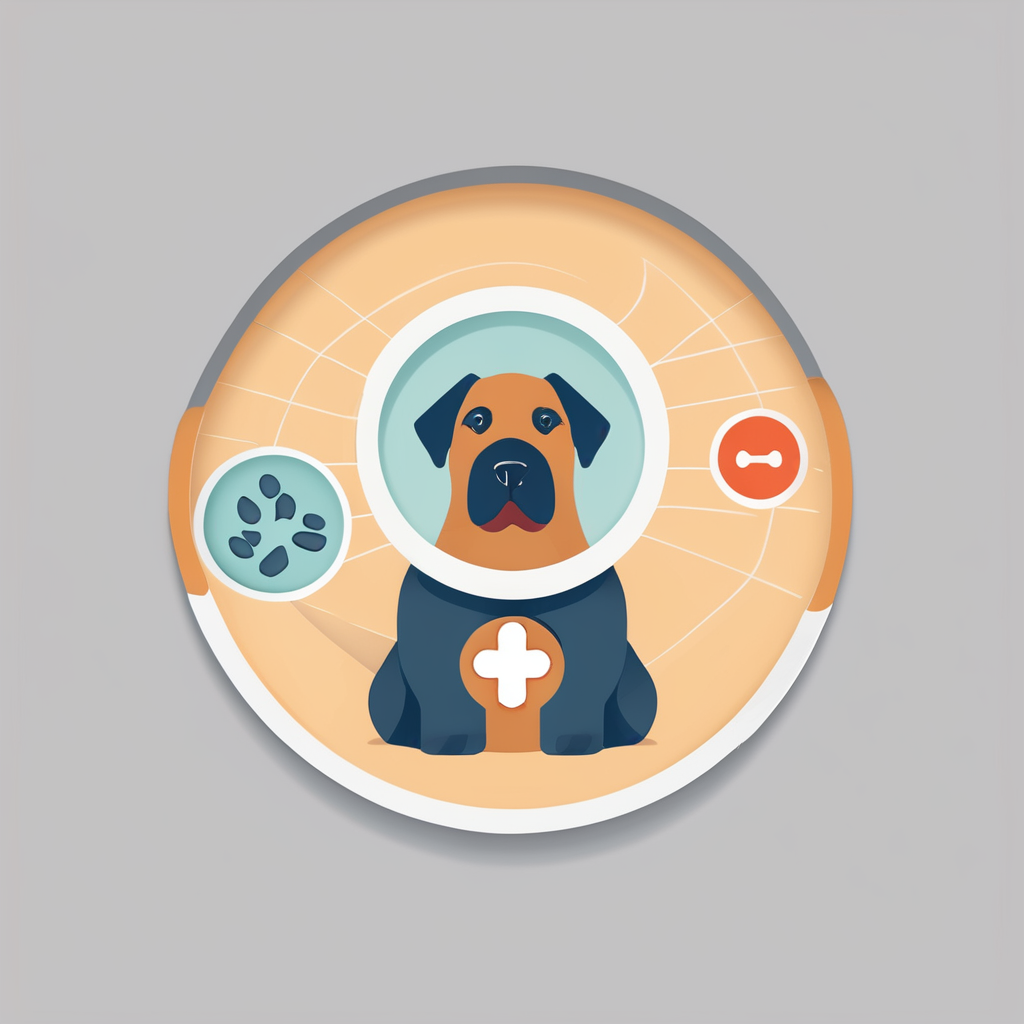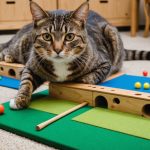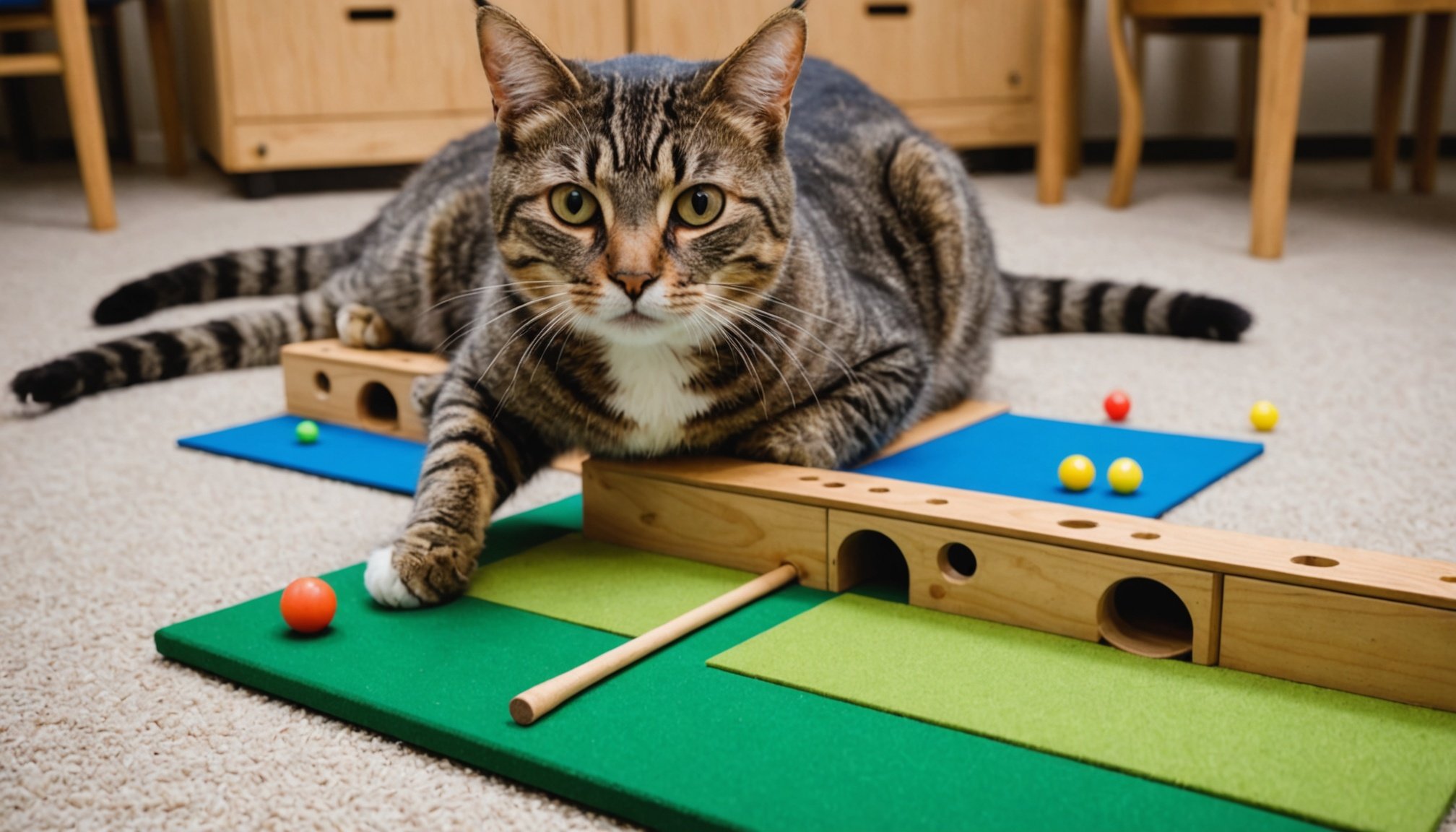Designing an Enriching Play Environment for Cats with Visual Impairments: A Comprehensive Guide
Understanding the Needs of Visually Impaired Cats
When it comes to creating an enriching play environment for cats, especially those with visual impairments, it’s crucial to understand their unique needs and how their natural behaviors can be stimulated despite their limited vision. Domestic cats, whether visually impaired or not, are inherently driven by their wild ancestors’ instincts, which include hunting, climbing, scratching, and social interaction[1][2][4].
Visually impaired cats rely more heavily on their other senses, such as hearing, smell, and touch. This means that the environment you create should be rich in sensory stimuli that cater to these senses. Here are some key considerations:
In parallel : What role does feline enrichment play in preventing behavioral issues in cats?
- Auditory Stimulation: Cats with visual impairments are more attuned to sounds. Using toys that make noise or creating a soundscape with bird songs or other natural sounds can be very engaging.
- Olfactory Stimulation: Cats have a keen sense of smell. Incorporating catnip, treats, and other scented items into their environment can be highly stimulating.
- Tactile Stimulation: Providing a variety of textures and surfaces for your cat to explore can be very enriching. This includes scratching posts made of different materials like wood, sisal rope, or rough fabric.
Creating a Safe and Accessible Environment
Ensuring the safety and accessibility of the environment is paramount for visually impaired cats. Here are some tips to make your home a safe and enriching space:
Clear Pathways
Make sure the pathways in your home are clear of obstacles. This includes keeping floors free of clutter and securing any loose wires or cords that could be tripped over.
This might interest you : What are the benefits of providing outdoor access to indoor cats through catios?
Consistent Layout
Maintain a consistent layout in your home. This helps your cat navigate more easily, as they will become familiar with the location of furniture and other objects.
Soft Landings
Provide soft landing areas in case your cat jumps or falls. Placing cushions or soft blankets near high surfaces can help reduce the impact of a fall.
Replicating Natural Feeding Behavior
Replicating natural feeding behavior is essential for all cats, and it can be particularly beneficial for those with visual impairments. Here’s how you can do it:
Food Puzzles
Use food puzzles that require your cat to use their sense of smell and touch to find their food. These puzzles can be filled with your cat’s favorite treats or kibble, and they come in various levels of difficulty[1][2][4].
Hidden Food
Hide small bowls of food in places your cat can easily find using their sense of smell. Start with easy-to-find locations and gradually move to more challenging spots.
Interactive Feeders
Interactive feeders that dispense food as the cat plays with them are another great option. These feeders can be adjusted to different difficulty levels and can provide mental stimulation.
Predatory Outlets and Play
Cats are natural predators, and providing outlets for this behavior is crucial for their mental and physical health.
Toy Selection
Choose toys that make noise or have different textures. Since visually impaired cats rely more on their hearing and touch, toys with bells, feathers, or other noise-making components can be very engaging.
Rotating Toys
Rotate toys regularly to keep the environment new and interesting. This prevents boredom and keeps your cat engaged in play.
Motion Toys
Use toys that can be moved around, such as laser pointers or feather wands, but be cautious not to direct them directly at your cat’s face. Instead, move them around the room to encourage your cat to follow and pounce.
Social Interaction and Affection
Social interaction is vital for all cats, and it can be particularly comforting for those with visual impairments.
Daily Playtime
Set aside time each day to play with your cat. This can be as simple as using a toy to encourage play or just spending time petting and interacting with your cat.
Physical Affection
Physical affection, like petting, is a two-way communication. Listen to your cat’s cues and adjust your interaction accordingly. For example, if your cat nuzzles or paws at you, it’s a sign they want more attention[1][2].
Providing Vertical Space
Vertical space is essential for cats, as it allows them to climb, rest, and observe their surroundings.
Cat Trees and Condos
Invest in cat trees or condos that provide multiple levels for your cat to climb and rest. Place these near windows to offer visual stimulation, even if your cat can’t see clearly[1][3][4].
Safe Perches
Ensure that any perches or shelves are stable and secure. You can also add soft cushions or blankets to make these areas more comfortable.
Scratching and Deep Stretching
Scratching is a natural behavior for cats that helps maintain their health and provides a positive outlet for their instincts.
Scratching Posts
Provide scratching posts made of sturdy materials like wood, sisal rope, or rough fabric. Place these near areas your cat frequents, such as sleeping areas or doors[1][4].
Training
Train your cat to use the scratching post by placing catnip or treats on it and rewarding them when they scratch the post.
Other Environmental Enrichment Ideas
Here are some additional ideas to enrich your cat’s environment:
Cat-Friendly Plants
Grow cat-friendly plants like cat grass, which is safe for your cat to eat and provides a natural source of fiber[2][4].
Bird Feeders
Place a bird feeder outside a window to provide visual and auditory stimulation. Even if your cat can’t see the birds clearly, they can still enjoy the sounds.
Cardboard Boxes
Leave empty cardboard boxes around for your cat to play with. Cats love the smell and feel of cardboard and will often use these boxes as hiding spots or play areas.
Practical Tips and Examples
Here are some practical tips and examples to help you create an enriching environment for your visually impaired cat:
Routine and Familiarity
Cats love routine and familiarity. Keep feeding times, playtime, and sleep schedules consistent to reduce stress and make your cat feel more secure[4].
Safety First
Ensure that any new objects or toys introduced into the environment are safe and won’t pose a risk to your cat. For example, avoid plants that are toxic to cats, such as lilies or tulips[4].
Cleanliness
Maintain a clean environment by regularly cleaning the litter box, food and water bowls, and general areas your cat frequents. This helps reduce stress and keeps your cat healthy.
Detailed Checklist for Creating an Enriching Environment
Here is a detailed checklist to help you create an enriching environment for your visually impaired cat:
- Clear Pathways:
- Keep floors free of clutter.
- Secure loose wires or cords.
- Consistent Layout:
- Maintain a consistent layout in your home.
- Soft Landings:
- Place cushions or soft blankets near high surfaces.
- Food Puzzles and Hidden Food:
- Use food puzzles and hide small bowls of food.
- Interactive Toys:
- Use toys that make noise or have different textures.
- Rotate toys regularly.
- Vertical Space:
- Invest in cat trees or condos.
- Place near windows for auditory and olfactory stimulation.
- Scratching Posts:
- Provide scratching posts made of sturdy materials.
- Train your cat to use the scratching post.
- Social Interaction:
- Set aside time each day for play and interaction.
- Listen to your cat’s cues for physical affection.
- Cat-Friendly Plants and Bird Feeders:
- Grow cat-friendly plants like cat grass.
- Place a bird feeder outside a window.
- Cardboard Boxes and Other Objects:
- Leave empty cardboard boxes around for play.
- Introduce new objects slowly to avoid stress.
Table: Comparing Different Enrichment Activities for Visually Impaired Cats
| Enrichment Activity | Description | Benefits |
|---|---|---|
| Food Puzzles | Toys that require cats to use their sense of smell and touch to find food. | Mental stimulation, reduces boredom, encourages natural foraging behavior. |
| Hidden Food | Hiding small bowls of food in accessible locations. | Encourages foraging behavior, mental stimulation. |
| Interactive Toys | Toys that make noise or have different textures. | Auditory and tactile stimulation, encourages play. |
| Vertical Space | Cat trees, condos, and shelves. | Provides climbing and resting areas, reduces stress. |
| Scratching Posts | Posts made of sturdy materials like wood or sisal rope. | Maintains health, provides positive outlet for instincts. |
| Social Interaction | Daily playtime and physical affection. | Strengthens bond, reduces stress, provides mental stimulation. |
| Cat-Friendly Plants | Plants like cat grass that are safe for cats to eat. | Provides natural fiber, olfactory stimulation. |
| Bird Feeders | Feeders placed outside windows. | Auditory and visual stimulation. |
| Cardboard Boxes | Empty boxes left around for play. | Provides hiding spots, tactile stimulation. |
Quotes and Insights from Experts
- “Cats are complex creatures, and they thrive in environments that best replicate wild behaviors. For our domesticated cats, this means enhancing their quality of life by providing environments that stimulate their natural behavior.”[1]
- “Environmental enrichment is especially important for indoor cats, who have less opportunity to engage in these instinctual behaviors.”[2]
- “Providing appropriate scratching items is essential in maintaining your cat’s health as well as creating a positive outlet for a natural behavior.”[1]
Creating an enriching play environment for cats with visual impairments requires a thoughtful and multi-faceted approach. By understanding their natural behaviors and adapting the environment to cater to their other senses, you can ensure your cat leads a happy, healthy, and stimulating life. Remember, every small change can make a significant difference in your cat’s welfare.
In the words of a dedicated cat owner, “Very little is better than watching our cats enjoy the things we’ve given them to explore and play on. When our cats are happy, we are happy because they contribute to our quality of life too.”[1] By following these guidelines and tips, you can create a safe, engaging, and enriching environment that your visually impaired cat will love.









